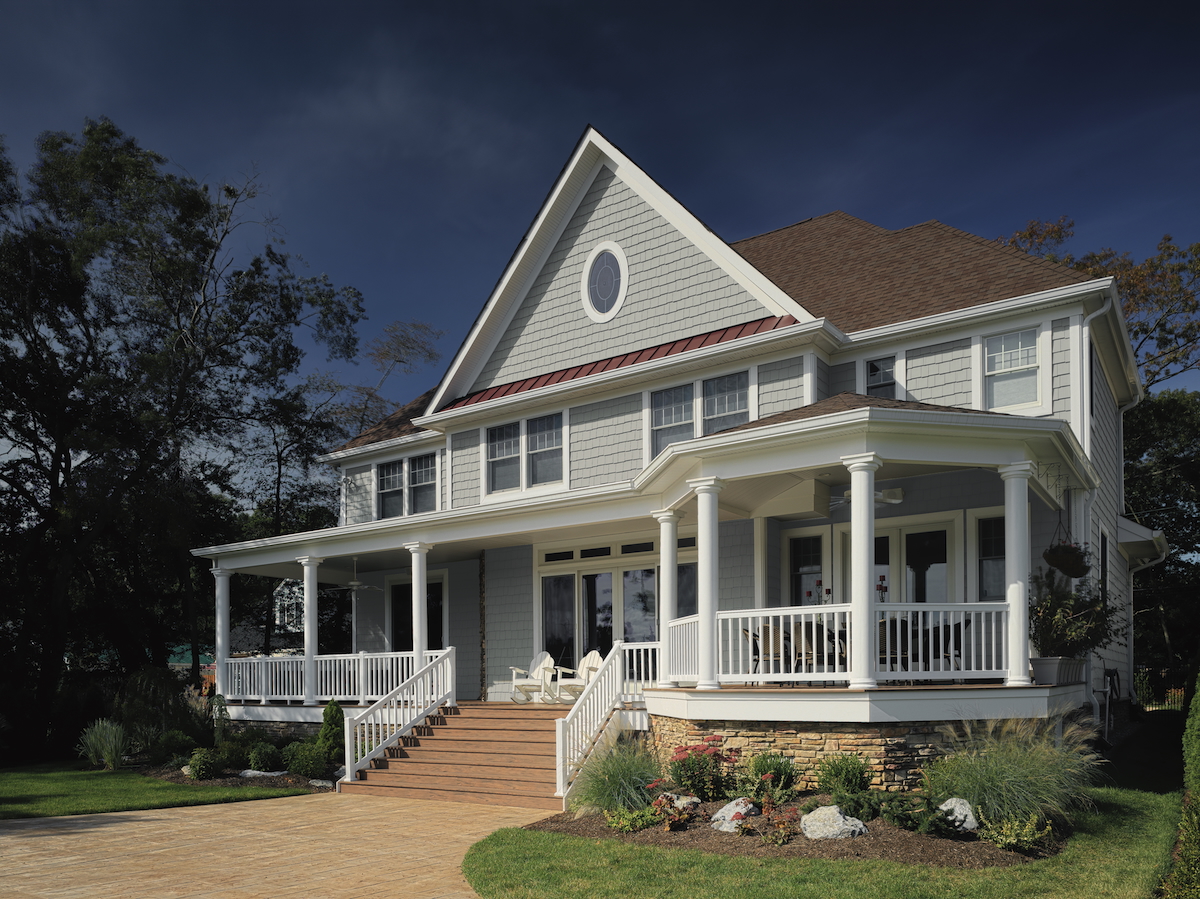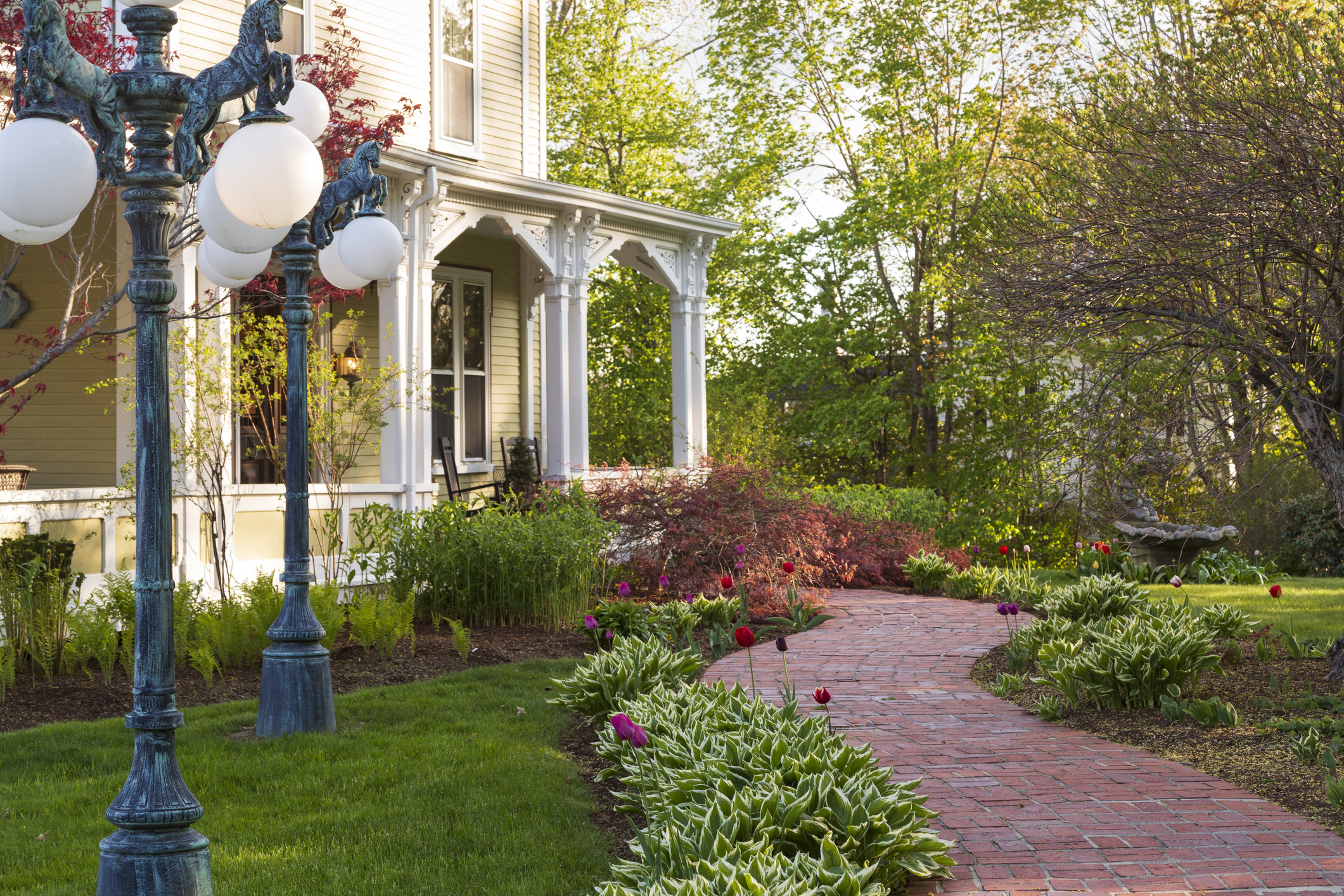

Supported by CertainTeed
Highlight your home’s character with CertainTeed’s eye-catching, exceptionally durable siding. From board and batten to shakes and shingles to clapboard and beyond, your design possibilities are nearly endless.


Supported by CertainTeed
Highlight your home’s character with CertainTeed’s eye-catching, exceptionally durable siding. From board and batten to shakes and shingles to clapboard and beyond, your design possibilities are nearly endless.
We may earn revenue from the products available on this page and participate in affiliate programs. Learn More ›
One of the keys to curb appeal is to design a home that is so striking that passersby stop in their tracks to peek at the artistic elements showcased. Neo-Victorian homes represent one such style that can garner a lot of attention, since they blend old-fashioned charm with modern updates.
Sometimes referred to as reimagined Victorians, these homes tell stories with their unique features straight out of a novel. “These houses take their cues from 19th-century charm but aren’t afraid to be a little theatrical, which is exactly why they shine when it comes to curb appeal,” says Jann Richardson, interior designer at The Lamp Goods in Loris, South Carolina. First appearing in the late 1970s, neo-Victorian houses typically exhibit characteristics of Queen Anne-style houses but in a more contemporary way.
Neo-Victorian homes often contain ornate exterior details, bay windows, steep roofs, wraparound porches, towers, and decorative woodwork in a variety of vibrant colors. These features can ultimately increase the value of your home, so consider incorporating them the next time you are ready to update your house.
Texture is everything when it comes to creating a neo-Victorian home that attracts attention, says Richardson. The siding typically consists of scalloped, fish-scale, or uneven shingles and shakes, providing a rugged look. CertainTeed vinyl siding (shown in the photo above) does an excellent job of capturing this aesthetic, recreating the natural textures of both cedar shakes and shingles in a variety of color options.
Clapboarding on the façade, along with a bit of gingerbread trim, also adds some curb appeal to this type of design. “The house is dressed up like it’s off to a garden party and didn’t go out the door without accessorizing,” says Richardson.

To accentuate the classic style of this type of home, opt for curved walkways. “Include winding brick walks, perhaps with a small iron gate, and landscape lighting that quietly ushers visitors to the door with a dashing whisper,” says Richardson. One of the jobs she worked on entailed landscaping a curving walk lined with lavender and vintage path lanterns. “At night, it looked like something out of a period novel,” she recalls.
Rich Kingly, home improvement expert and CEO of Driveway King in Garwood, New Jersey, loves living in his neo-Victorian house. “I’ve installed a curving cobblestone walkway at my place, edged with subtle ironwork,” he says. “It guides guests with Victorian grace, and at Driveway King, we’ve seen these paths make homes feel grand and inviting—total curb appeal winners!”
Windows add personality to any home and can help set the tone as part of the architecture from a specific period. “Neo-Victorian windows don’t believe in subtlety; expect bays, bows, arches, and stained glass peeking through like little surprises,” says Richardson. Windows aren’t just for letting in light—they frame the soul of the house, she adds. “I love highlighting them with dramatic trim colors or even soft uplighting in the evening to give the façade a touch of theater.”
Kingly’s home includes tall, arched bay windows with delicate trim. “Their light-catching elegance and gingerbread details scream character, making the façade unforgettable,” he says.

The porch is one highlight of a neo-Victorian house. Porches are typically broad and wrap around the house, allowing plenty of space to gather and enjoy spending time outdoors. They often have unique features like decorative spindles, scrollwork, and fancy railings that can come to life easily by incorporating CertainTeed trim and columns.
“My wraparound porch, with turned posts and ornate spindles, invites relaxation,” notes Kingly. “Paired with our walkways, it’s a charming focal point that makes my home a neighborhood gem.” Add some finishing touches by purchasing outdoor furniture and décor such as cast-iron benches, ornate planters, and decorative water features to showcase the Victorian style.
Carefully curated landscaping helps top off this look. Neo-Victorian landscaping tends to lean romantic, not rigid, says Richardson. “This is not the place for sheared boxwoods and naked gravel beds; instead, stick to layered plantings, climbing roses, heirloom perennials, and blooming trees.” People walking by should get a sense that the house has a history, and perhaps wonder whether the backyard contains a secret garden.
Kingly’s yard boasts manicured hedges and vibrant rose beds, echoing Victorian gardens. “These structured, lush touches frame the home, popping against my custom pathways and wowing every passerby,” he explains.